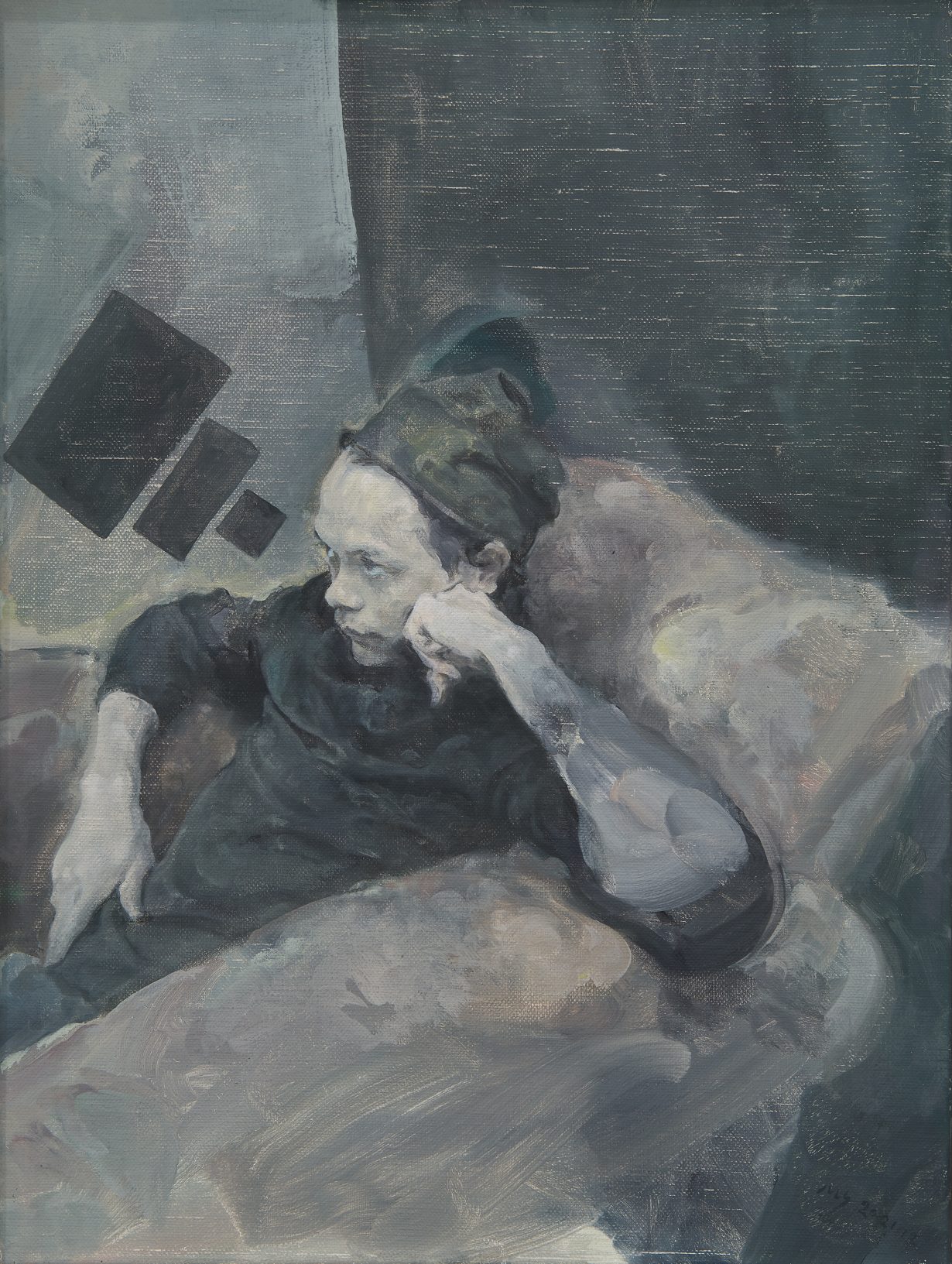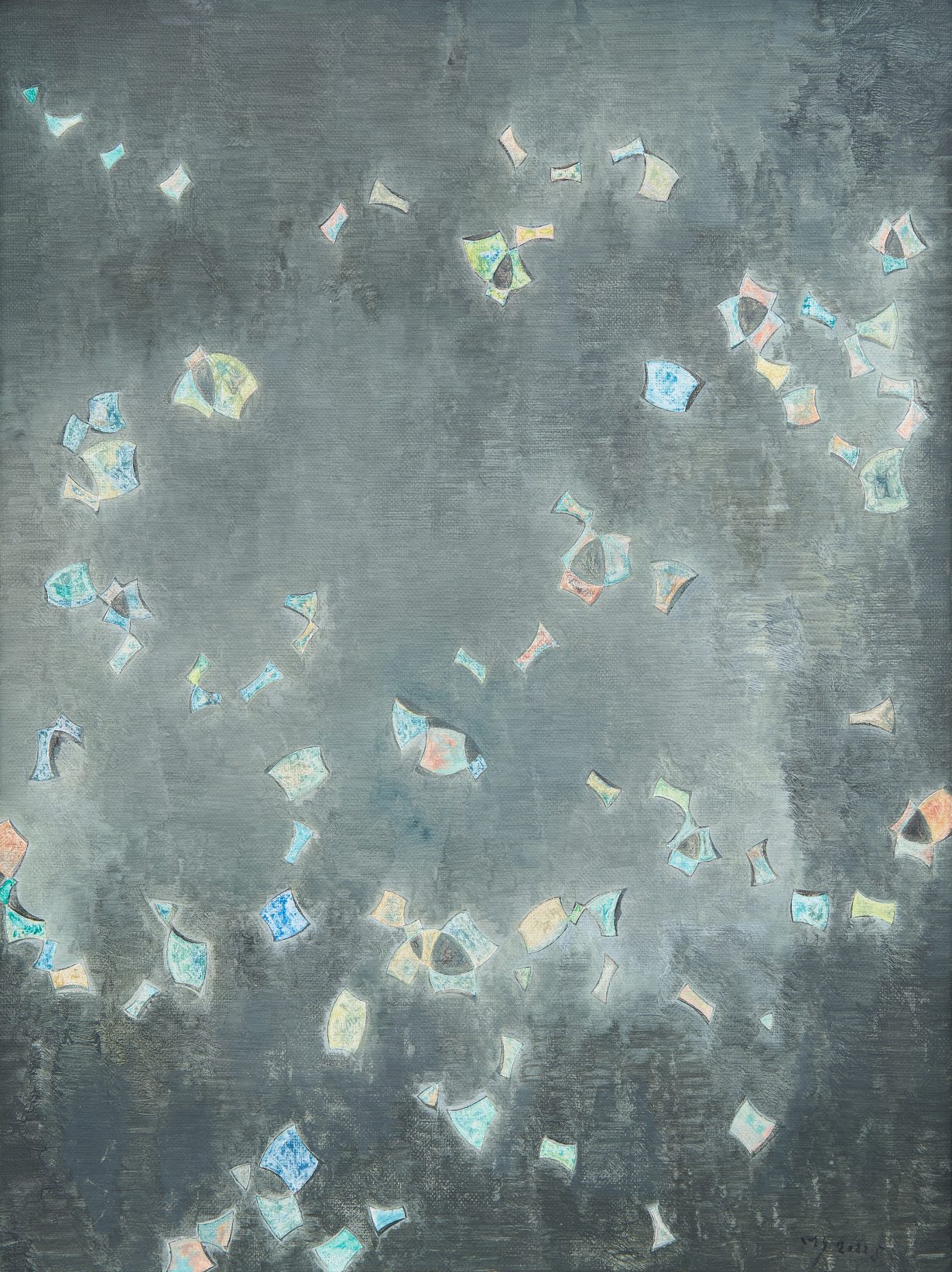The artist’s New Paintings at Pace, London trade in ennui and tranquility, to varying degrees of success

It looks as though boredom has descended upon the figures in Mao Yan’s latest series of paintings. They sit and stare, some off to the side while others gaze directly at the viewer. If ennui has a colour palette, this is it: ashen skin tones and washed-out greyish-blue backdrops. Mostly, we don’t know who these characters are – Young Man with a Hat No.2 (2021), Madam (2022) or Man with Gloves (2023).
There is, however, one portrait: Master Hongyi and Mariewicz, (2021). In it, the Chinese artist-turned-Buddhist monk lies peacefully on a cot: perhaps sleeping; perhaps dead. Above him hangs a painting – a black square, a reference to Kazimir Malevich (a contemporary of Hongyi), whose name here is spelled ‘Mariewicz’. It’s not so clear why, but maybe that doesn’t matter, because the square appears to be hung lopsided anyway (assuming that it is actually meant to be Black Square, 1915). Hongyi is named, presumably, because he was known for painting and teaching in the Western style – which sort of draws a connection with the sfumato technique that’s incorporated into Mao’s paintings. While Malevich, for his part, had previously expressed that he wanted to ‘free art from the ballast of objectivity’ (The Non-Objective World, 1927). So perhaps that’s a clue of how we should look at things here, too; be a bit less prescriptive and more intuitive. There’s a nod to Malevich’s Suprematist Composition: Airplane Flying (1915), as well: in Young Man with a Hat No.2, three black rectangles – divorced of their original composition that includes other colour rectangles – hover by the figure’s head, like a trinity of angular thought-bubbles, while he slouches in an armchair and gloomily looks away at something outside the canvas.

I’d be bored too, if the entire exhibition were made up of those portraits. For ‘new’, albeit more-defined works, they don’t seem all that different to Mao’s older hazier portraits. But it’s the series of abstract geometric paintings, Broken Teeth (2021–22, all roughly A3-sized) and Condensed or Adrift (2022–23, which are much larger at 1.5m), hung in an adjacent room and in the basement, that add a degree of tension to the exhibition, rescinding the threat of its being merely a basic portrayal of despondency. Despite the two series’ titles, there isn’t a noticeable difference in the formal aspects of the paintings – and both share the same muted washy blue-and-grey colour palette as the portraits. But these paintings invite visitors to look closer. They are many layered, each with what looks like hundreds of barely-visible overlapping circles drawn onto the canvas, intersecting sections of which are painted a different colour (usually a grey-black) to the background (usually a grey-blue), which results in paintings that look as though shattered and decayed bits of teeth are slowly sinking through a body of water. Although shown separately from the disinterested figures in the portraits, the shapes also look like they might represent the human psyche; scattered and broken, perhaps these fragments are all that remains of the ballast of a weary mind.
New Paintings at Pace, London, 19 January – 9 March